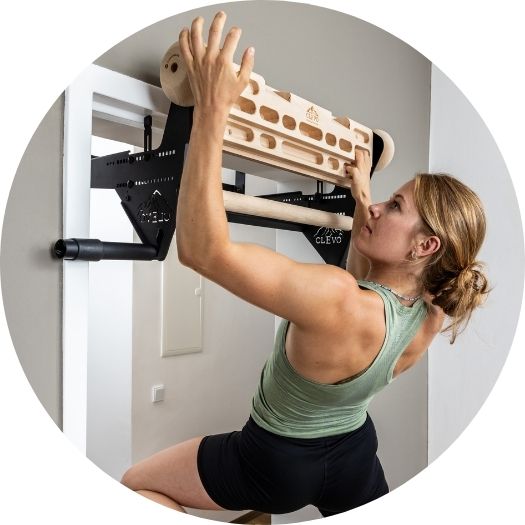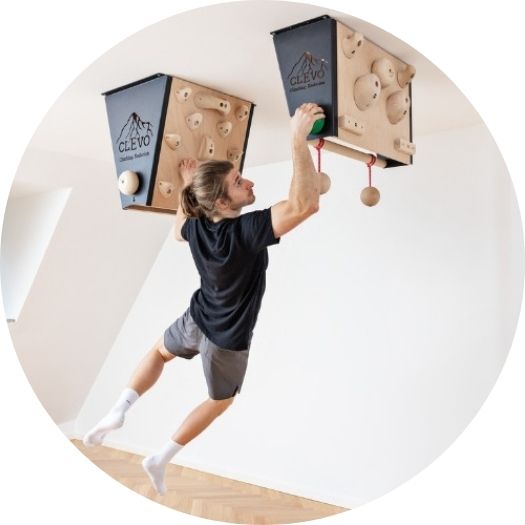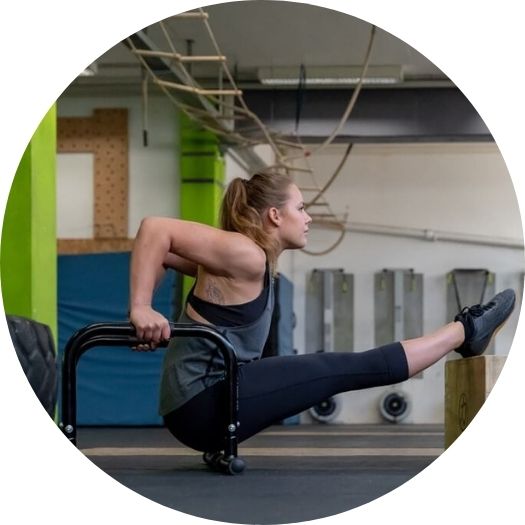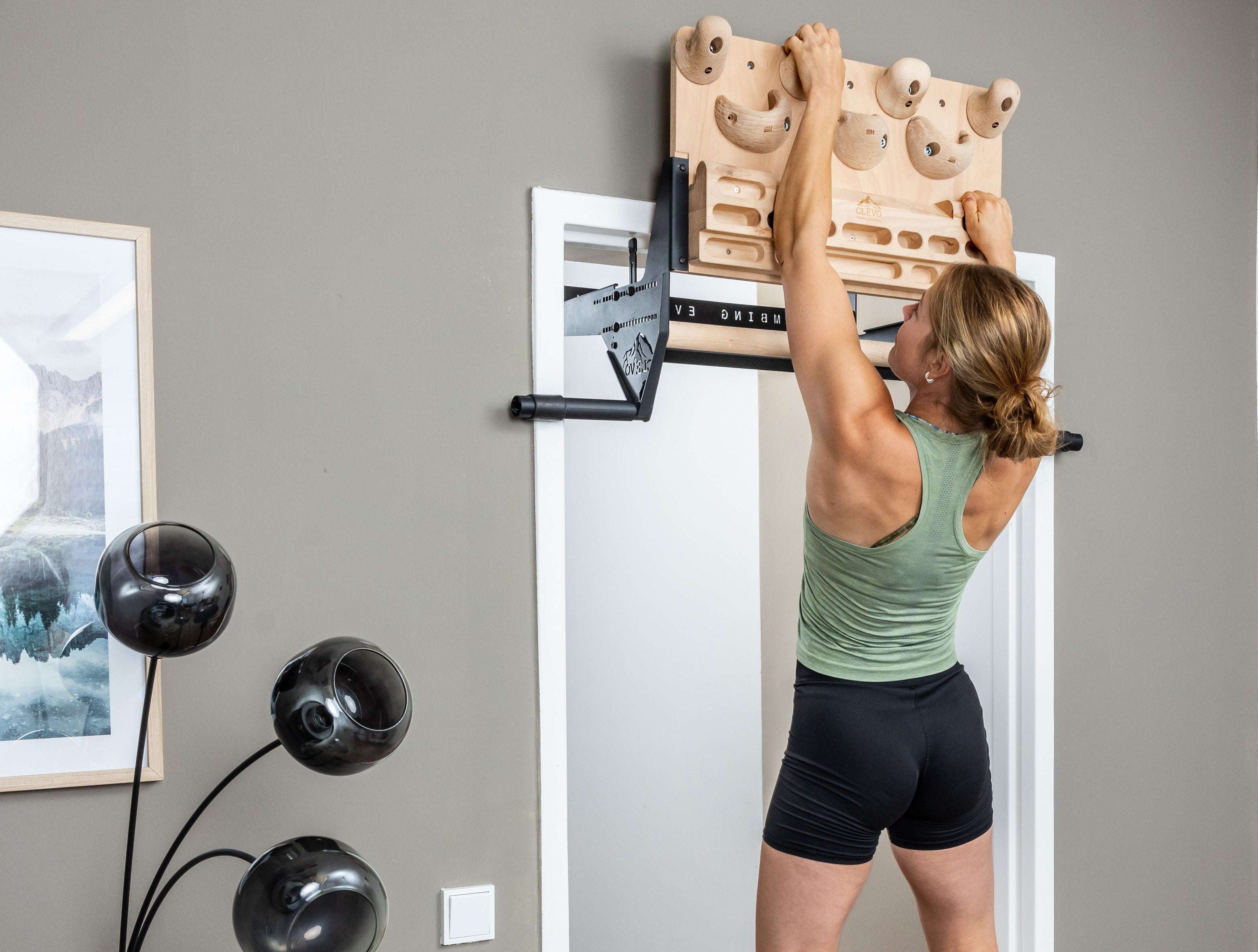Climbing vs. calisthenics is a question I never thought needed an answer. It's one of those things that comes so naturally to me. The winning answer is so obvious (to me dummy) that the question itself, "When contrasting climbing and calisthenics, which activity is better for building muscle and strength?" never crossed my mind. It has to be calisthenics, right? Or not? Wiser souls than me pointed me to functional strength, and if there's one thing you need for rock climbing, it's functional strength. I've explored the differences between rock climbing and calisthenics. As a bonus, I'll give you a complete calisthenics workout for rock climbers.
What is calisthenics?
Let me start with the basics, calisthenics. There is a reason why I start with the question "What is calisthenics" and it will become clear in the conclusion. Calisthenics is a bodyweight exercise that builds muscle and strength through progressive overload. Your body weight is the source of resistance that causes your muscles to overload. Your body adjusts its metabolism to produce more muscle fibers for what it now considers the normal load. You rinse and repeat this process until you are satisfied with the results. That's calisthenics in a small nutshell.
Typical calisthenics exercises include pull-ups, push-ups, dips, squats and various lifts such as leg raises. There are many variations of these basic exercises, which together make up the broad spectrum of calisthenics training. Broadly speaking, these calisthenics exercises are divided into push and pull exercises.
What is climbing?
Today, climbing can be practiced both indoors and outdoors. Whether you are bouldering, free climbing or using a toprope, climbing is about overcoming a certain height. You achieve this by lifting your body weight above your current vertical position. There are many
There are of course many techniques, but the core of the activity is the ascent using your own physical strength. Even when climbing with 'aids' such as pitons and bolts, you have to do most of the lifting with your body. All of these activities require prior training in order to gain the necessary strength for repeated and safe practice. The fewer safety precautions there are to prevent a fall, the more you need to rely on your physical strength and, just as importantly, your skill.
Moving straight up or down is generally safer than moving sideways. Lateral movements require you to reach for a contact point away from your center of mass and the direction gravity is trying to pull you.
You make strategic decisions during the climb to minimize lateral movements and choose a route that maximizes upward movement. Not only does this save money, but it also ensures more efficient use of energy. In other words, most physical climbing techniques can be divided into either push or pull exercises.
What are the differences between rock climbing and calisthenics?
The overlaps between rock climbing and calisthenics are now clear. Both are bodyweight exercises when you get right down to it. The movements of rock climbing and calisthenics can primarily be divided into push and pull techniques. What are the differences between rock climbing and calisthenics?
Apart from the differences in the equipment you can or cannot use for both sports, I see five main differences between rock climbing and calisthenics:
- Rock climbing is riskier than calisthenics
- Rock climbing requires more preparation than calisthenics
- Rock climbing requires more finger strength than calisthenics
- Rock climbing is sometimes more dependent on the weather
- The goal in rock climbing is to reach the summit.
Rock climbing vs. calisthenics Difference 1: The risks
Hanging from a 30-meter-high ledge and a 2-meter-high pull-up bar may use the same muscles, but the consequences of losing your footing are completely different. As Tigger from Winny the Pooh puts it: "There's no difference between falling off a mountain and falling out of bed. It's all about the landing."
With one, you can be annoyed that you didn't make the jump or, at worst, sprain your ankle. The other most likely means you'll never climb again ... or never do anything at all, period.
Dealing with this stress is an essential part of climbing. You have to take calculated risks that you know you can handle with your training, skill and strength. The moment you panic or make one too many mistakes, you're done for. It takes a lot of training, using equipment like CLEVO climbing gear in a safe and controlled environment first.
This brings me to the next important difference between calisthenics and climbing: preparation and equipment.
Rock climbing vs. calisthenics - Difference 2: Preparation and equipment
Both calisthenics and rock climbing are about the movements you perform and being aware of these movements and the limits of your strength and endurance. But with these different risks come different preparations and logistics. While watching a tutorial on a technique and wearing wrist wraps is enough for calisthenics, rock climbing requires more preparation and training beforehand.
To be safe at a height of more than two meters, climbers need the necessary safety equipment both indoors and outdoors. This may involve aids such as bolts, a wire rope, belay devices to check the flexibility of the rope and so on. You also need to learn how to use all these aids correctly and safely before you can use them in a real environment.
There are also some safety concerns with calisthenics, but they are not comparable to those of rock climbing. Calisthenics beginners can get started right away with minimal equipment. To climb safely, you must first practice the techniques, get, borrow or rent the equipment and know how to use it properly.
Rock climbing vs. calisthenics - Difference 3: Finger strength
Calisthenics equipment is usually made to perfect specifications to be as ergonomically perfect as possible. This can be down to the millimeter when it comes to bar diameter, adjustable heights for your pull-up or dip bars, and how much resistance you want from your resistance bands.
Mother Nature doesn't give a damn about your comfort. Protrusions, ledges, ridges and niches come in all shapes and sizes. As a rule, you can't avoid all the obstacles or obstacles encountered on the climbing wall. Rather, it depends on how many fingers you can wrap around a ledge or stick into a small niche.
Rock climbing vs. calisthenics Difference 4: Weather dependency (often)
You look out of the window and it's pouring with rain. You shrug your shoulders and do today's exercises in the gym. That's a luxury calisthenics can afford that most rock climbing can't. There are rock climbers who deliberately climb in bad weather, but they are few and far between. Most climbers choose fair weather days. This makes calisthenics the more accessible sport of the two.
You can also go to an indoor climbing gym, which is a great workout, but not the same and almost always involves climbing the top rope as part of the gym's guidelines. Indoor climbing walls simulate a real rock wall or bouldering parkour. You can train for this at home or in the gym, e.g. with CLEVO climbing equipment.
Rock Climbing vs. Calisthenics - Difference 5: Difference in intention
When you start rock climbing to build muscle, you are putting the cart before the horse. Calisthenics is a far more controlled method of creating muscle overload and is more accessible on a daily basis. With all these control mechanisms and measurements, calisthenics is more efficient at building functional strength and muscle mass. You climb with the intention of reaching the top under your own power. Strength is also trained here, but more sporadically.
Climbing is a great way to improve your dexterity and agility. However, you need a high level of dexterity, balance, strength and grip strength before you can attempt real climbing, whether indoors or outdoors.
A calisthenics workout for climbers
After looking at the key movements that climbers rely on compared to calisthenics practitioners, I've developed the following calisthenics workout to get you ready for your next (or first) climb.
The best calisthenics moves for climbers
The following exercises will prepare you for the typical movements involved in climbing:
- Pull-ups: Pull your entire body weight up over a ledge or hold point using only your arm strength.
- Wide Pull-Ups: Sometimes the hold points are not optimally placed straight above you. Wide pull-ups help you to train pulling up with holding points further apart.
- Narrow pull-ups: Sometimes there is only a ledge or niche that you can use as a holding point. Narrow pull-ups are used to prepare for these obstacles.
- Archer pull-ups: Often the next hold points are not at the same distance from each other. With archer pull-ups, you train your muscles to be able to perform pull-ups well even if your arms are at different angles.
- One-arm pull-ups: Maintaining three points of contact is important, but there is always a risk that you will only be able to hold on to one point of contact with one arm. If you are able to at least pull yourself back up to a safe position with three points of contact, this can be your salvation.
- Squats: Your legs are much stronger than your arms. Preparing them for deep and full upward movements is fundamental to being a successful rock climber.
- Pistol Squats: Since one leg should always be standing, it's always one leg that
does all the pushing. Pistol squats prepare your legs to carry the entire load of your body weight and push it upwards.
Best calisthenics equipment for rock climbers
Similar to freestyle climbing, you need very little equipment for calisthenics. What you do need is a pull-up bar so that you can pull yourself up on it. The simplest and most easily accessible option is a door pull-up bar. The special circumstances of rock climbing also require finger strength training. Models equipped with a hangboard are ideal for this. These combine the pull-up bar with a method for developing finger strength. The CLEVO pull-up bar with hangboard is a very good example of this.
You can watch my full video test of the CLEVO pull-up bar with hangboard here:
Weekly calisthenics workout for climbers
Here is a weekly calisthenics workout for climbers. This is an advanced calisthenics push/pull routine designed for the serious climber. If you are a beginner, you should check out a beginner calisthenics program class first in addition to the beginner classes for climbers.
|
Mon 15 pull-ups 15 Wide pull-ups 10 Archer pull-ups |
|
Tue 3x10 dips 3 x 20 squats |
|
Wed 15 pull-ups 15 narrow pull-ups 2 x 30 seconds hangboard dead hang |
|
Thu Rest day |
|
Fri 15 pull-ups 15 wide pull-ups 10 Archer pull-ups |
|
Sat 3x10 dips |
|
Sun 2 x 30 seconds hangboard dead hang 10 hangboard pull-ups |
Conclusions about rock climbing vs. calisthenics
Which builds more muscle or strength? Most likely calisthenics, with its regimented training and highly specialized pull-up bars, is more efficient. But I think we're comparing apples and oranges here. Climbing is not about building muscle, it's about reaching the top.
That's why I started by answering the question of what calisthenics is. You can't be a good and safe climber if you are physically weak. Given the similarities between calisthenics techniques and the body movements you constantly perform when climbing, it makes sense that calisthenics comes before or at least at the same time as climbing.
They are by no means in opposition to each other. In fact, calisthenics can play a huge role in becoming a better and more enduring climber. I am not surprised that many climbers also practice calisthenics as their sport of choice to build muscle and functional strength, as well as the dexterity required to climb on sight. Calisthenics can also contribute to a more even physique, as it is easier to perform pressing exercises in calisthenics than in climbing.
The differences between rock climbing and calisthenics can be compensated for with special training and equipment. Climbing or calisthenics? I say do both.










1 comment
rosalind
I love to see rock climbers and have noticed a climbing facility in the city as well as in some of the sporting goods store. What equipment is needed for indoor climbing? I just want to try this type of exercise for the ability to pull my own body weight up. This is one type of exercise that will help me in realizing my muscle VS fat percentage based on my personal view and intelligence. Thanks.
I love to see rock climbers and have noticed a climbing facility in the city as well as in some of the sporting goods store. What equipment is needed for indoor climbing? I just want to try this type of exercise for the ability to pull my own body weight up. This is one type of exercise that will help me in realizing my muscle VS fat percentage based on my personal view and intelligence. Thanks.